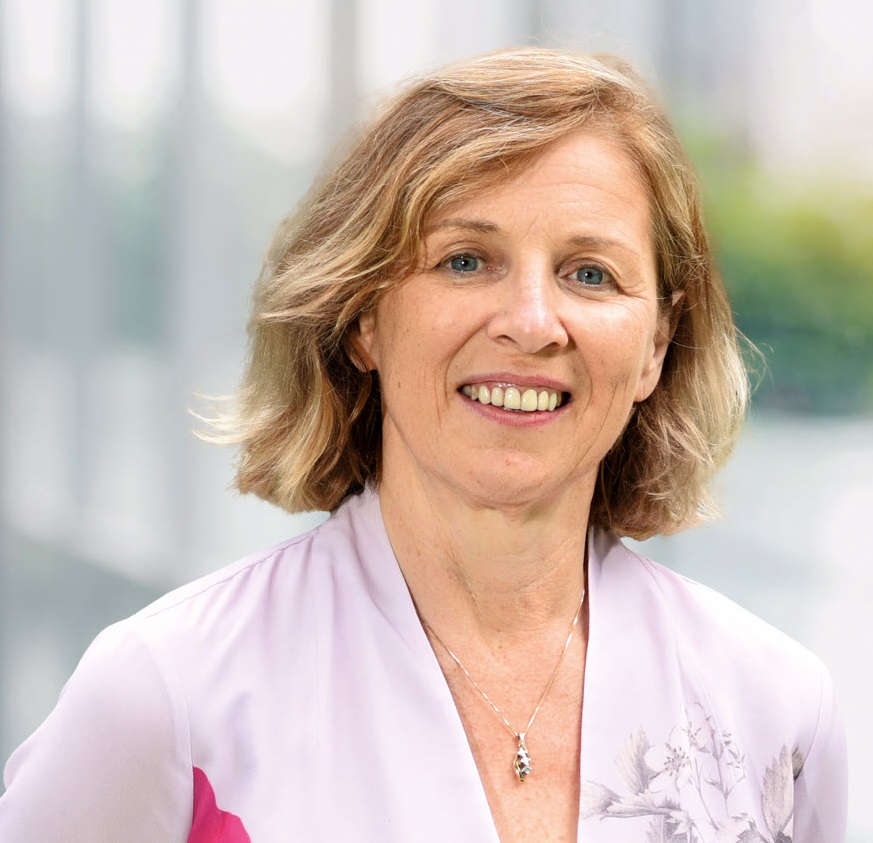
Written by:
Susan Galbraith,,,,
阿斯利康肿瘤学研发执行副总裁欧洲杯微信买球
We start with the idea that by the time cancer is diagnosed, it has been evolving often for many years and has multiple genetic and epigenetic changes driving its growth. To achieve long-term survival and potential for cure, it must be attacked from many angles. By simultaneously developing therapies that directly target cancer cells and others that activate the immune system to help in the fight, we are exploring the next wave of treatments, including novel combinations that may result in deeper, more durable responses.
Since I first trained as an oncologist nearly 30 years ago, there has been phenomenal progress in cancer research, not least here at Oncology R&D, AstraZeneca.
我们以两种不同的方式处理转型药的开发:
1)Mechanisms that directly kill cancer cells -e.g. by switching ‘off’ growth-driving mutations, targeting chemotherapy or radiation directly to cancer cells using antibodies, targeting key vulnerabilities in the DNA damage response and targeting epigenetic changes
2)激活免疫系统为了增强人体的自然防御能力,可以减慢癌细胞的生长,破坏细胞或阻止它们扩散(例如,通过克服免疫抑制,激活现有的T细胞并取代免疫系统)
Through our relentless quest for innovation, we have created one of the most diverse portfolios in the industry to tackle cancers with the greatest unmet need.
这种方法的基础是我们能够快速获得对疾病生物学的更深入了解并确定可能持有钥匙以解锁新疗法和潜在治疗方法的能力的基础。我们正在使用多管齐下的方法 - 投资基因组学,data science and AI,,,,next-generation sequencing andCRISPR基因编辑– to identify, interrogate, and validate new targets in a way not previously thought possible. Each new insight and every new piece of information brings us closer to creating better, more advanced and more effective treatments for patients.
开发针对癌细胞驱动因素并克服抗药性的新药物
潜力antibody drug conjugates (ADCs)为了改善乳房的治疗,肺,胃和其他癌症是巨大的。ADC是杰出的杀死癌症的药物,可能成为治疗组合中的新主链。与常规的化学疗法不同,ADC直接将药物直接输送到癌细胞中,并限制对健康的损害1。In a similar way, we can use antibodies to target radiotherapy to kill cancer cells, sparing normal tissues.
We can also now create medicines that exploit the body’s multiple ways of detecting and repairing DNA damage, known asDNA damage response (DDR) mechanisms。Many cancers have lost one of these DDR mechanisms, which make them vulnerable to targeting other parts of these pathways2。Cancer cells also have incredibly high mutation rates, which results in dysfunctional cellular machinery and damaged DNA. While these cells can survive with a certain level of damage, there is a limit. Our goal is to develop innovative, targeted, and biomarker-driven treatments that exploit these vulnerabilities in the cancer cells.
However, many patients who initially respond to targeted therapies develop resistance to their treatment, causing it to stop working on cancer cells3。That’s why we’re zeroing in on how to target the genetic mutations and mechanisms that facilitate this resistance process – including targeting multiple biological pathways simultaneously – with the potential to extend survival for patients with resistant cancers4。
Not all cancers are driven by direct changes to the genome. We’re just beginning to understand how the patterns of how different genes are expressed or suppressed in different settings –称为表观遗传学- 可以控制癌症的生长,甚至可以导致耐药性5。我们已经启动了几个项目,以更好地了解如何使用表观遗传学的学习来设计更有效的治疗方法。
Through our relentless quest for innovation, we have created one of the most diverse portfolios in the industry to tackle cancers with the greatest unmet need.
通过利用免疫系统的力量来治愈
In addition to targeting mutations and epigenetic changes in cancer, we are pioneering approaches to develop the next wave ofimmuno-oncology (IO)药物。IO疗法可以刺激人们对人体自身的免疫监视机制的癌症的认识,并且可以克服癌症随着进化而经常发展的免疫抑制机制6,7。IO疗法已成为许多癌症方案的支柱。
我们的广泛管道具有多种肿瘤类型的一系列潜在的一类IO疗法,这些肿瘤类型正在研究各个疾病和疗法阶段,包括IO疗法的新型组合,并有可能引起更深,更耐用的反应8,9。
我们还正在探索通过在难以治疗的实体瘤中潜力的下一代免疫传入者的发展来激活自然T细胞反应对攻击癌细胞的反应。T细胞探测器具有与T细胞结合的一只手臂,另一只与癌细胞结合,从而将T细胞“拉到”肿瘤中。
的力量cell therapiesto transform cancer treatment by amplifying the body's natural immune response has been one of the biggest stories in oncology over the past decade. We are investing significantly to address the limitations that exist in this space – which has the promise to put cures within reach one day.
寻找未来
We are also looking for new ways to enhancecell therapythrough combinations with other agents in our portfolio and via strategic research collaborations. Evidence suggests that targeting more than one pathway may combat multiple tumour escape mechanisms, potentially allowing for greater anti-tumour activity than with one pathway alone10,11,12,,,,and we are exploring a number of IO combination strategies for these synergistic effects.
However, it is an unfortunate reality that many cancers are identified and diagnosed in the metastatic setting; we need to identify and treat disease earlier for optimal outcomes. We are investigating ways to detect cancer signals sooner, such as using measurements of循环肿瘤DNAto identify patients who are most at risk of their cancer returning – to inform a personalised treatment strategy.
Many cancers are identified and diagnosed in the metastatic setting; we need to identify and treat disease earlier for optimal outcomes. We are investigating ways to detect cancer signals sooner, such as using measurements of circulating tumour DNA, to inform personalised treatment strategies.
We are on the cusp of significant advances in the way we treat cancer and bringing transformative medicines to patients. By following the science, being bold, and not fearing failure, we are getting closer to our mission of offering a potential for cure for an increasing proportion of the millions of people worldwide living with cancer.
Learn more about how we are leading a revolution to redefine cancer care in the below video: